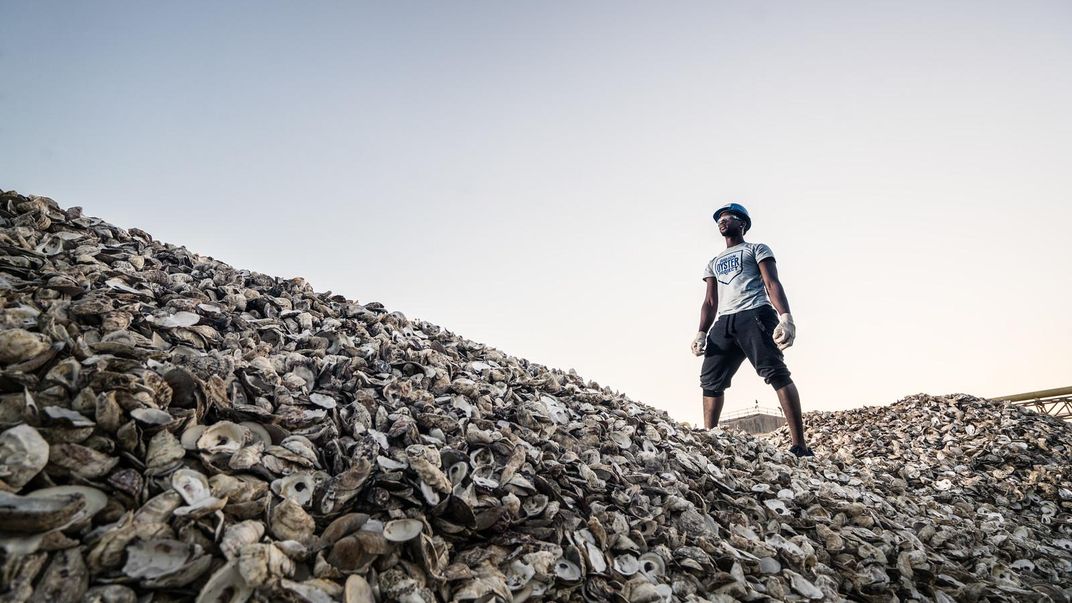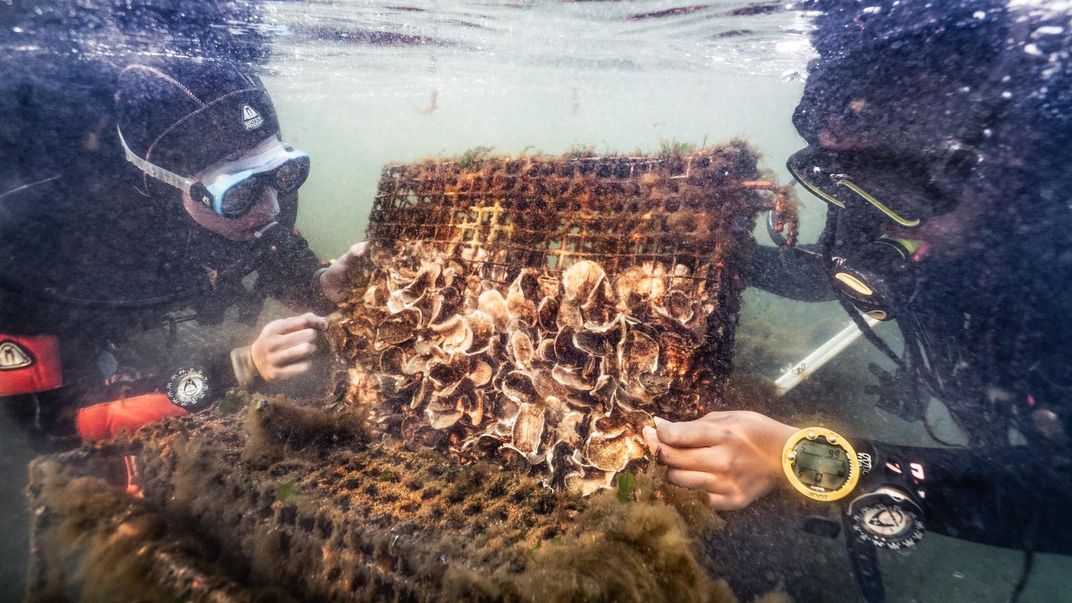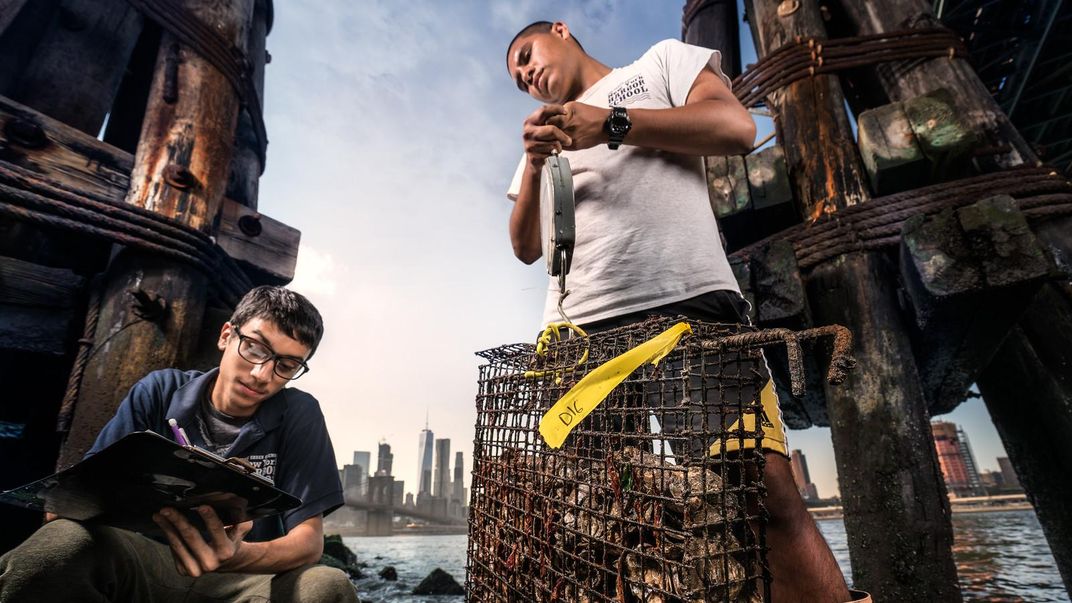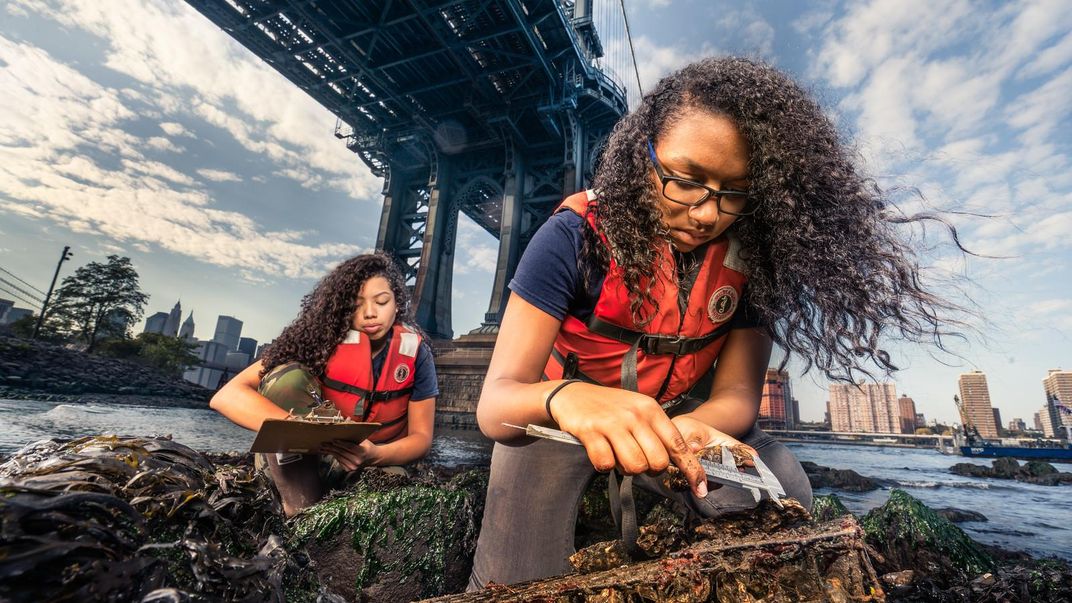Why New York Schoolchildren Want to Grow a Billion Oysters
It’s a grand attempt to restore a ravaged estuary
For some, school is a place for lectures and lessons at a desk. But students in New York City's public schools are breaking the mold, adopting the harbor as their classroom and the humble oyster their subject.
Their work is part of a nonprofit called the Billion Oyster Project, an attempt to restore New York Harbor with the help of mollusks. And as they dive, build and observe, they’re helping bring back something that almost died out altogether.
Oysters were once so common in the harbor that New York was known as the world’s oyster capital. As the New York Public Library’s Carmen Nigro explains, oysters were so abundant in the harbor that they astonished early European settlers. Middens—piles of oyster shells—were omnipresent in the burgeoning new city, and the creatures were so plentiful that they were considered cheap food, not a delicacy.
But over the years, that changed. Overharvesting, traffic and pollution took its toll in the Hudson River estuary, rendering these mollusks all but extinct—a fate that’s befallen oysters the world over.
But as Smithsonian.com’s Tony Perrottet notes, the city has begun to recapture its maritime spirit, and the Billion Oyster Project is part of that movement. The project works with New York schools, restaurants and volunteers to grow oysters and repopulate at least a tiny part of the harbor with reefs.
Oyster larvae need to attach themselves to a hard surface in order to grow. In the harbor of olden days, these mollusks used the shells of long-gone oysters as a landing spot. But the drop in oyster population means that there are far fewer shell substrates for baby oysters to attach to.
To solve this problem, the team reached out to New York restaurants—which, according to the project's website, zip through roughly half a million oysters every week. Some of those restaurants donate their castoff shells to the program. The students then seed these shells with oyster larvae produced at the New York Harbor School, a public high school on Governors Island.
The recycled shells emulate how oysters would have grown in the harbor centuries ago, giving oysters new shells for life and reusing something that would have otherwise been thrown away. The shells and larvae are placed in heavy student-welded cages to prevent the shells and their delicate cargo from sinking into the mud at the bottom of the harbor.
Once they’re set, the oysters go to the Harbor School’s nurseries or restoration stations and are monitored and maintained by middle schoolers from all over the city. Inside the restoration stations, the oysters are monitored for two years, and water quality and survival rates carefully calculated. The students then move the oysters to reefs and continue to monitor them as they grow. Photographer Benjamin Von Wong recently documented the entire process, from welding to scuba diving to making detailed biological observations.
Restoring oyster reefs isn't just an exercise in nostalgia. As critical parts of maritime habitats, oysters provide homes for other animals and filter polluted waters. The Billion Oyster Project is just one of many current efforts to restore oyster habitats along the Atlantic coast. Already, the student-seeded oysters have filtered an estimated 19.7 trillion gallons of water. And as more grow, they provide larger areas in which new baby oysters can grab hold.
Peter Malinowski, the project’s director, admits to Smithsonian.com that a billion is an ambitious number. But even if they achieve their goal, only a tiny percentage of the estuary’s original oyster count will be restored. So far, over 20 million oysters have been grown—with more to come.
Malinowski, who grew up on an oyster farm, is used to an oyster-centric worldview. But seeing other people get “all fired up about oysters” has been a surprise—and watching kids drive boats, solve complex problems and make the harbor their classroom has been rewarding.
“There’s a misconception that young people should be sitting at a desk,” says Malinowski. “But the natural world is right in the center of New York City.” With more time and effort, perhaps the health of that natural world can expand—one oyster at a time.
/https://tf-cmsv2-smithsonianmag-media.s3.amazonaws.com/accounts/headshot/erin.png)





/https://tf-cmsv2-smithsonianmag-media.s3.amazonaws.com/accounts/headshot/erin.png)